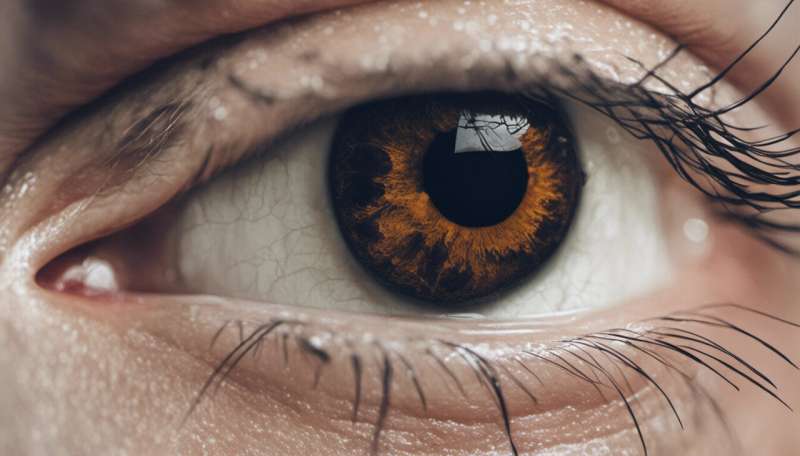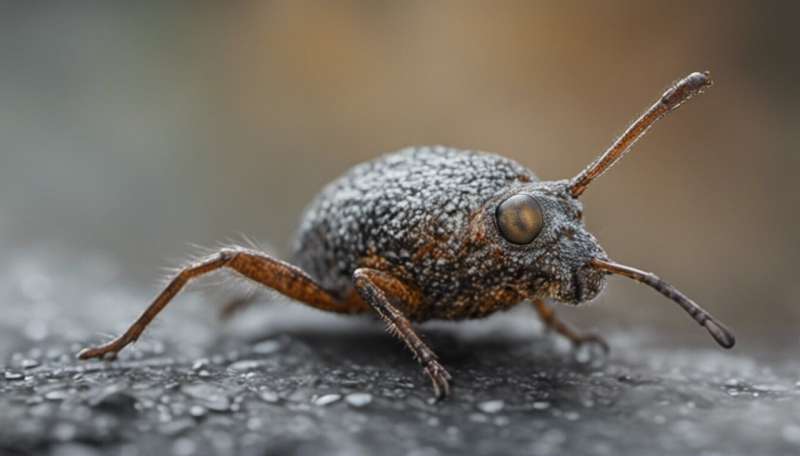This article has been reviewed according to Science X's editorial process and policies. Editors have highlighted the following attributes while ensuring the content's credibility:
fact-checked
trusted source
written by researcher(s)
proofread
How microbiomes and the smells they produce help shape behavior in bugs, birds, animals and humans

Microbes are an integral part of most, if not all multi-cellular organisms. In fact, these organisms are the way they are because of the tiny partners they house within and on them. These microbes constitute the microbiome: an "invisible organ" weighing approximately 2.5 to three kilograms in an adult human and much more in larger animals.
This unique body part was made visible with the advent of modern molecular imaging technologies. In my book Microbiomes and their Functions, I explore how it works in partnership with other visible organs and engages in a variety of physiological functions essential for the development and survival of the hosts.
Microbiomes have been part of all these organisms from the beginning, and have evolved in tandem with them, just as their visible organs have.
The digestive tract, with all its components, is a good example of how organs can be shaped by their microbial inhabitants. The digestive tract has markedly disparate features in a carnivore, an omnivore or a herbivore. Herbivores have the longest digestive tracts and carnivores have the shortest.
The microbiome
The bulk of microbiome is found in the digestive tract, where it helps extract nutrients from our diet. The diverse microbes constituting the microbiome not only contribute to optimal digestion, but also help prime our immune system, and produce hormones and neurotransmitters (or their precursors) that have profound influence on our behaviors.
The information-laden molecules generated by the microbiome play a crucial role in the body's non-verbal communication. These microbiome-derived signals can elicit a range of responses including hunger, satiety (feeling full), mood changes and social behavior.
The information network between the gut microbiome and the brain is aided by the vagus nerve that connects these two organs.
Microbes like Lactobacillus and Bifidobacterium residing in the gut secrete neurotransmitters known to influence human behavior such as GABA (gamma-aminobutyric acid), acetylcholine, norepinephrine, oxytocin and indole metabolites. Indole derivatives are obtained when gut microbes metabolize the essential amino-acid, tryptophan.
For instance, the neurotransmitter dopamine is considered a "feel good" hormone and is often associated with positive emotions. However, low levels of this molecule may contribute to anxiety. On the other hand, indoles are linked to satiety, resulting in a tendency to eat less, and are associated with weight loss.
Smelly signals
Despite its invisible nature, the microbiome often makes its presence known by emitting sounds and smells. The latter can be powerful signals that can influence behavior.
These smelly signals can, at a distance or at a close range, prompt happiness, enthusiasm, anxiety, attraction, fear or aggression. The microbially-concocted odors are a very important tool in the communication arsenal that most organisms—including humans—rely on to send or receive non-verbal messages.
The human skin is home to a diverse range of microorganisms known to contribute to different odors. Bacteria like Staphylococcus and Corynebacterium lodge in the warm and moist underarm region of the skin where the apocrine glands, a source of chemicals, abound. The resident bacteria use these chemical nutrients to shape body odor.
These apocrine glands generally produce odorless compounds. It is microbes that fashion those compounds into smell signatures characteristic of an individual. These odoriferous signals can serve to attract or repel people and modify social behaviors. For instance, the presence of select bacteria is known to process non-smelly steroids into compounds with a characteristic urine odor, not conducive to making friends.

Chemical signals in animals, birds, plants, fungi
In other mammals, odoriferous compounds like trimethylamine or pentanoic acid entice mates, while in animals endowed with a scent pouch, they lure prey, defend or mark territories. Some of the pungent chemicals are notoriously reputed to keep predators at bay.
Birds have a special gland that hosts a diverse microbial population, which generates scent-releasing chemicals. These easily transmittable signals are aimed at repelling predators, attracting mates, recognizing kin, promoting parental care and identifying proprietary nests.
These smelly marks are also key to maintaining the social order of numerous insects. These scents can not only help camouflage the hosts, but can also convert loners to crowd-lovers. For instance, it is a scent that cajoles the solitary locust into a gregarious lifestyle during the feeding season and triggers an insatiable appetite for vegetation.
Some fungi are known to enlist the fragrance of vapor-like chemicals to assemble their microbiome, which in turn helps the host perform a variety of essential physiological functions.
Truffles—the highly sought-after edible fungus—are renowned for their distinctive smell, but they may be dependent on the microbiome to produce this sweet fragrance. In fact, truffles recruit select microbes to generate aromatic alcohols that lure small mammals to dig them up, which promotes the dispersal of the truffle's spores.
Plants and algae are also dependent on microbe-derived odor prompts to assist them to survive, and even die and be scavenged. Plants depend on these smell signatures to communicate dangers lurking in their environment and even to fend off insects, birds or other predators.
When some algae bloom beyond control due to environmental conditions, they plot their own demise with the assistance of microbes. Some of these microbes not only help the algae die, but are also responsible for producing distinctive odors that are detected and decoded as food by birds and fish. The result is a clean-up of the dead algae by feasting birds and fish.
The microbiome and its signature smells are crucial for most organisms, whether human, insect or plant. The silent signals sent by the microbiome are essential communications that influence behavior, and have evolved to help the host survive and thrive.
Provided by The Conversation
This article is republished from The Conversation under a Creative Commons license. Read the original article.![]()


















